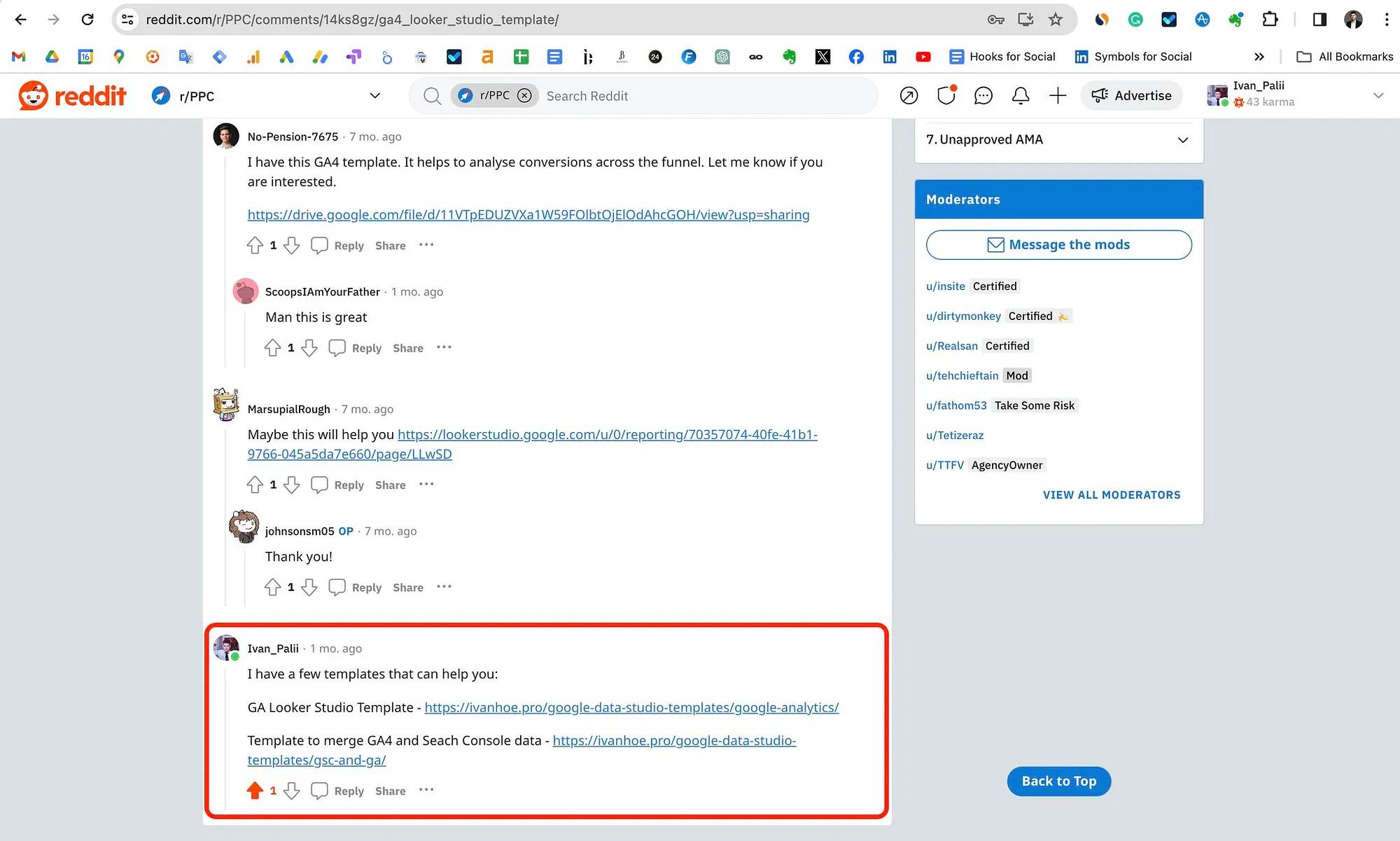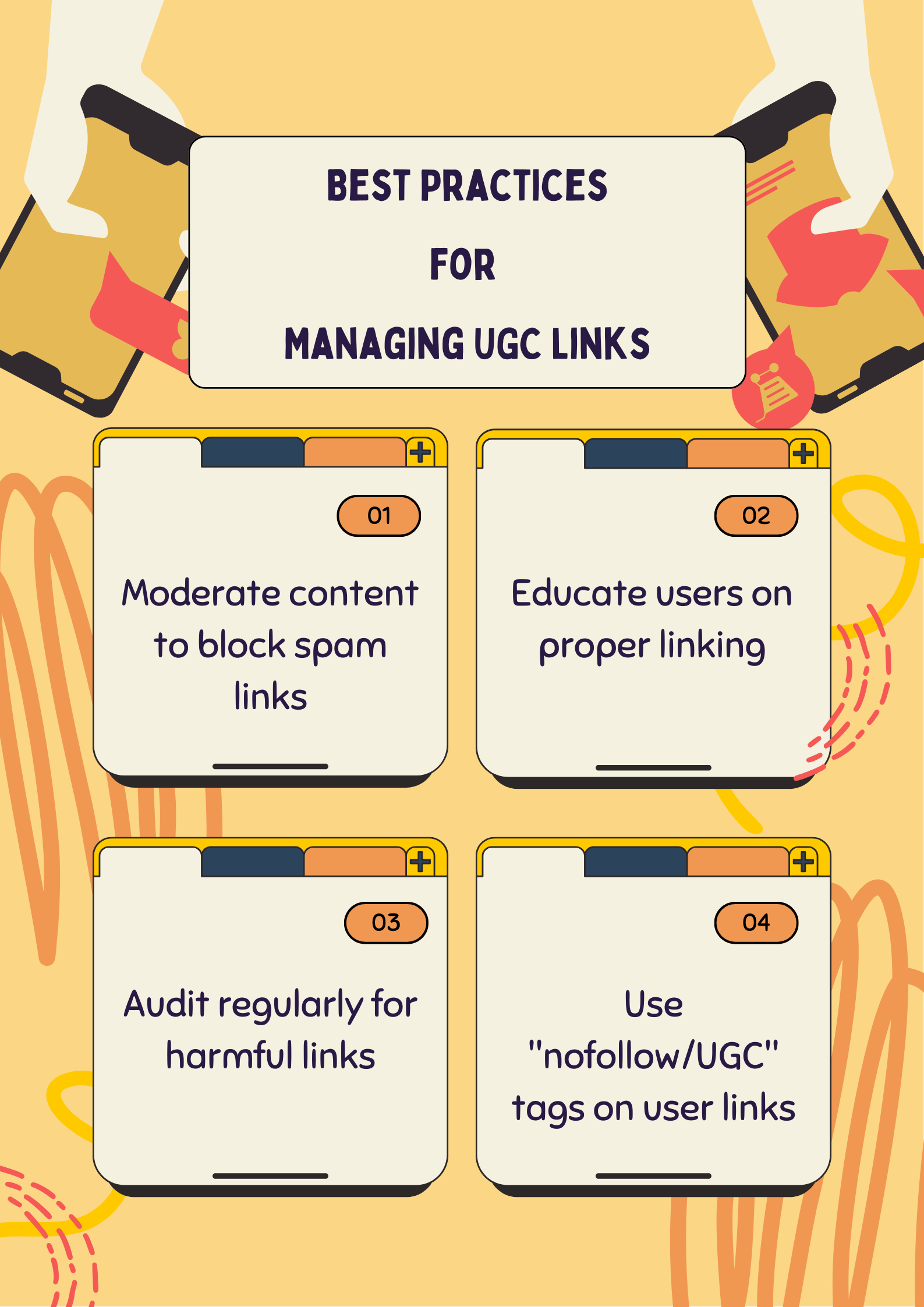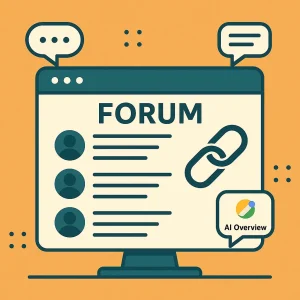
SaaS Link Building Playbook for Faster SEO Wins
Learn proven SaaS link building tactics to rank faster, boost DR, and drive signups with high-quality backlinks.
Are your user-generated links helping or hurting your SEO?
You probably already allow blog comments, forum replies, or product reviews—but did you know that these user contributions could damage your rankings if not tagged properly?
That’s where the UGC link attribute steps in.
If you’re running a SaaS knowledge hub or an eCommerce product review section, ignoring this small tag could invite spam or even penalties.
In this glossary breakdown, you’ll learn what a UGC link is, when to use it, and how to keep your SEO clean and compliant.

UGC stands for User-Generated Content—and in SEO, a UGC link refers to any hyperlink added by users, not site owners.
To tell search engines that a specific link wasn’t placed editorially, you use the rel=”ugc” attribute inside the link tag.
This tag was introduced by Google to help webmasters label links that appear in comment sections, forums, and community-contributed content. It’s essentially a signal: “This link wasn’t added by us—it came from a user.”
Adding rel=”ugc” doesn’t block search engines from crawling the link, but it ensures that the link doesn’t influence search rankings or pass PageRank.
This protects your domain from being associated with spam or unnatural backlinks.
You should use rel=”ugc” for links in places like:
Example:
<a href=”https://example.com” rel=”ugc”>Helpful SEO checklist</a>
So, if you’re running a blog, a SaaS help forum, or even a customer testimonial section—this tag helps keep your backlink profile healthy while staying in Google’s good books.
Not all links are created equal—especially when users, not you, are the ones adding them.
That’s why the rel=”ugc” tag exists. It tells search engines,
“Hey, we didn’t endorse this link—it came from a user.”
This small attribute has a big job. It helps Google and other search engines separate editorial links (which you intentionally placed) from user-generated links (which could be spammy or self-promotional).
Without that clarity, even one bad link in a comment thread could put your domain at risk.
Google has long warned against link manipulation. If your blog or forum hosts links that seem manipulative or low-quality—and they aren’t labeled correctly—you could get hit with a manual action or algorithmic penalty.
Using rel=”ugc” doesn’t just protect you from penalties—it keeps your backlink profile clean and trustworthy.
It signals that you’re playing by the rules and taking responsibility for your site’s content, even when users contribute.
So, whether you’re managing a SaaS help community or a B2C product Q&A page, adding the right attributes to user links is a quiet but powerful SEO defense move.
Knowing when to apply rel=”ugc” can make or break your link hygiene.
The UGC tag isn’t about restricting links—it’s about giving Google clarity on who added the link and why.
When readers drop links in the comment section of your blog—whether to their own content or elsewhere—those links should carry the UGC tag.
Example: A user recommends their own blog post in your SaaS tutorial comments.
If you run a community or niche forum, your users will naturally share links.
Even if helpful, those links should be tagged as UGC to indicate that they weren’t endorsed by your editorial team.
Example: A customer links to a third-party tool in your product forum.

User-submitted reviews may contain links to case studies, videos, or even their own websites.
These should be tagged UGC—even if the reviews are genuine—to keep your outbound profile clean.
Example: A B2C reviewer links to their video testimonial on YouTube.
If you or your content team added the link as part of a guide, blog post, or resource—it’s editorial.
These links should remain untagged or be treated as standard dofollow/nofollow based on your intent.
Example: Linking to an SEO study in your article.
UGC ≠ Sponsored. If a brand paid for the link or placement, you should use rel=”sponsored” instead.
Tagging sponsored links as UGC is incorrect and might raise red flags with Google.
Example: You publish a paid guest post and forget to tag the backlink as sponsored.
If in doubt, lean on UGC—it’s better to over-protect than under-tag.
Adding rel=”ugc” is easy—but missing it could invite SEO risk. Whether you prefer manual control or automation, the goal is the same: ensure user-generated links are properly tagged to protect your domain’s integrity.
If you’re adding links directly into HTML or reviewing user content one by one, this is the most precise method.
Simply insert the rel=”ugc” attribute inside your anchor tag:
<a href=”https://example.com” rel=”ugc”>Check out my SEO checklist</a>
Use this approach when:
If you’re on WordPress, tools like Yoast SEO or WP External Links can help automate the tagging process.
Steps:
Tip: Always update your plugin settings when your content structure changes.
Running a high-volume site?
Automate link tagging with these best practices:
Taking 15 minutes now to set up proper tagging can save you hours dealing with penalties later.

User-generated content can be gold—or a ticking SEO time bomb. If you allow user links on your site, having a management strategy is non-negotiable.
Here’s how to stay clean, compliant, and penalty-free.
Spammy backlinks in comments or forums can instantly tarnish your site’s reputation. Always enable manual review or spam filters for user-submitted content. Tools like Akismet (for WordPress) or CleanTalk can block known spam bots automatically.
Pro Tip: If you’re short on time, set filters to hold any comment that contains a URL for manual approval.
Let your users know upfront what kind of links are allowed.
Create simple contributor guidelines explaining:
Display these rules near your comment form, forum policy page, or submission guidelines.
Set a monthly or quarterly schedule to audit user content using tools like Ahrefs or Screaming Frog.
Look for:
Flag and remove anything that looks like link manipulation.
The safest bet? Add rel=”ugc” to all user-submitted links. In certain cases, combining it with rel=”nofollow” is even smarter:
<a href=”https://spammy.com” rel=”ugc nofollow”>User-suggested tool</a>
Use:
This combination gives Google all the signals it needs to avoid penalizing your site for content you didn’t write.
Keeping your UGC links in check isn’t just about SEO—it’s about maintaining trust with both users and search engines.
📬 New to UGC Links? Stay Ahead with Real SEO Insights
Understanding UGC links is just the start.
Subscribe to our newsletter and get weekly updates on link building tactics, SEO breakdowns, and SaaS case studies—delivered straight to your inbox.

Learn proven SaaS link building tactics to rank faster, boost DR, and drive signups with high-quality backlinks.

Learn how to pick a trusted white label link partner for your SaaS agency. Avoid spammy links and scale SEO growth.

Uncover the real value of forum backlinks in 2025—learn smart strategies, avoid risks, and build SEO trust effectively.
